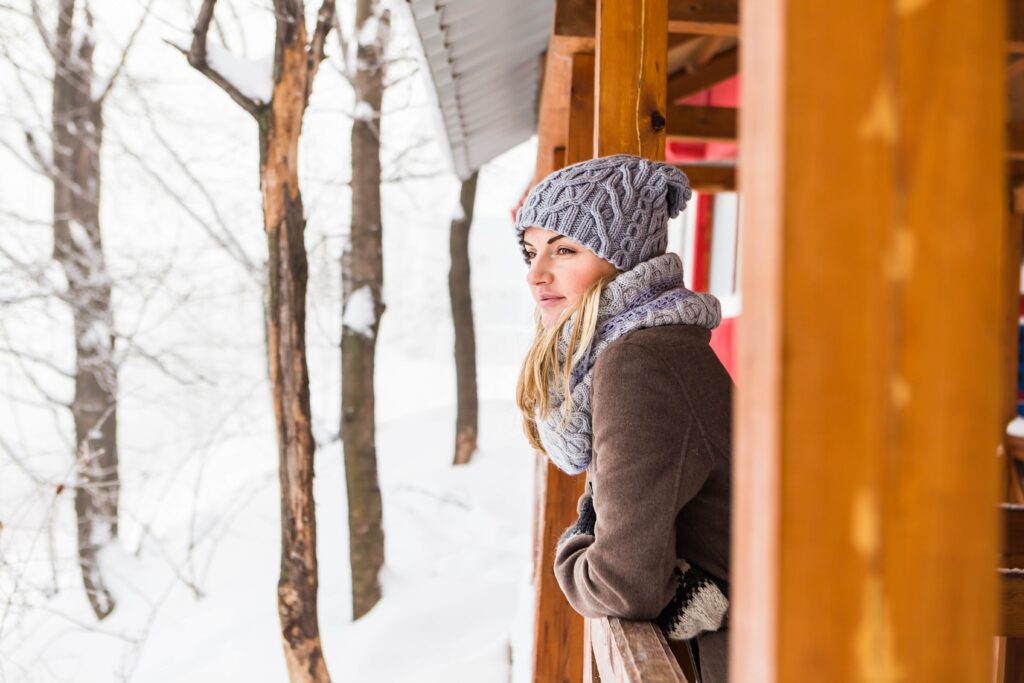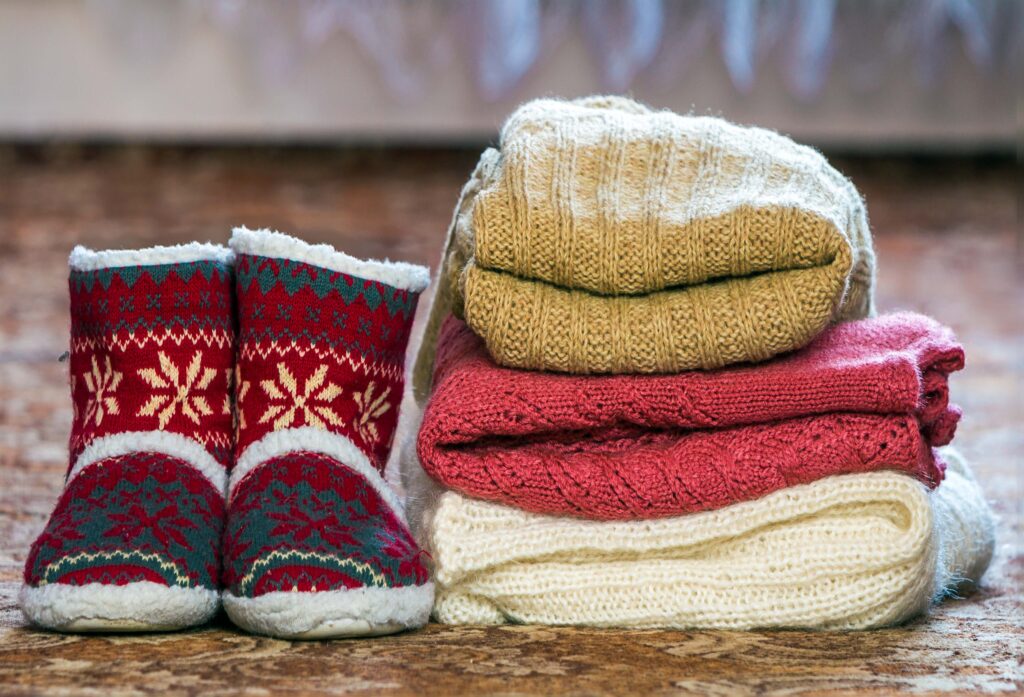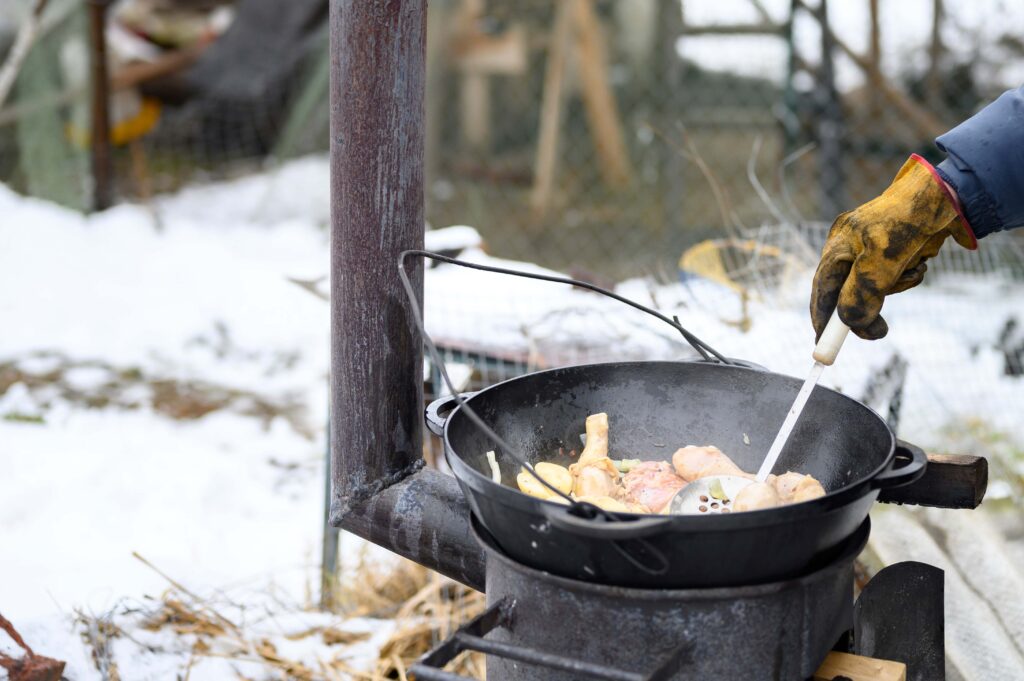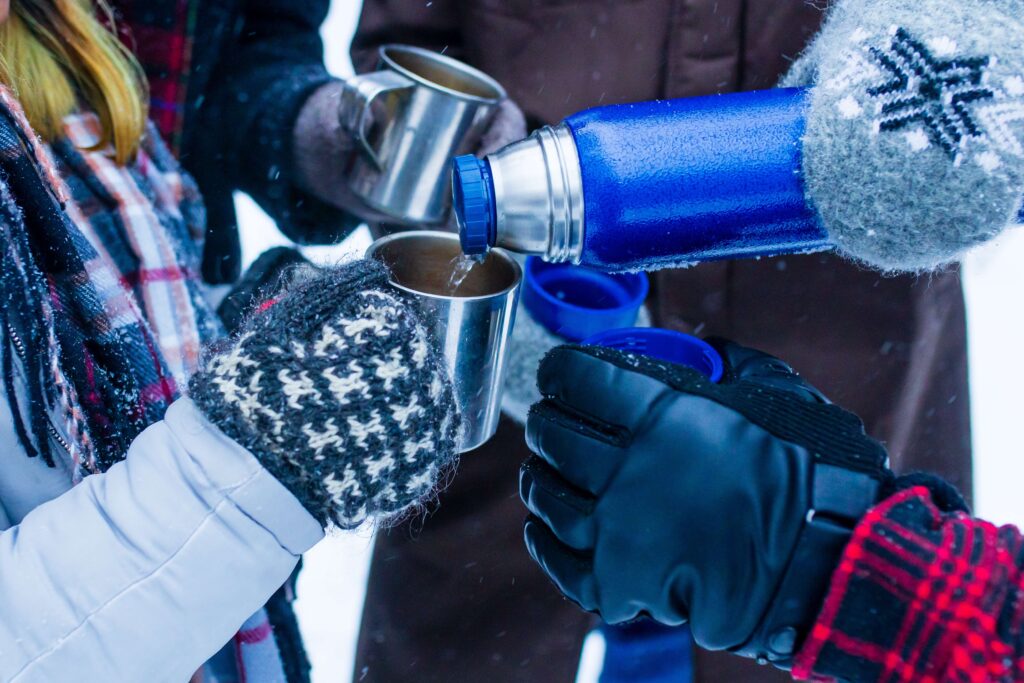Table of Contents
Toggle
Introduction
Winter camping offers serene landscapes and breathtaking snow views but presents challenges like freezing temperatures. Having the right winter camping equipment is crucial for staying safe and comfortable. With the right gear, you can tackle the cold head-on and enjoy all that winter has to offer.
This 55 essential winter camping checklist covers shelter, clothing, cooking, hydration, and safety, ensuring you’re prepared for winter adventures.
To make planning easier, download our PDF checklist for all 55 winter camping equipment items.
Winter Camping Essentials

Make sure never to forget these winter camping gear List to have a comfortable and safe experience while enjoying winter camping:
Four-Season Tent: You must own a tent to withstand high winds and snow.
Insulated Sleeping Bag: Try to look for a sleeping bag that is rated to below 0 degrees.
Thermal Base Layers: A clothing layer that does not retain moisture and at the same time retains heat.
Waterproof Outerwear: Goggles, jackets, pants, and gloves that keep you dry at all times.
Portable Stove and Fuel: A means to keep yourself warm by cooking food and drinks.
Traction Gear: Ice cleats or crampons that allow you to maneuver through icy paths.
Emergency Kit: A set containing a first aid kit, multi-tool, and hand warmers.
Headlamp and Spare Batteries: Crucial during the long cold winter nights.
High-calorie Snacks: Compact food that is energy-dense to keep you active.
Sleeping Pad: A barrier between you and the cold ground.
After reading these essential winter camping items, it is safe to say that packing all of them will help you witness the beauty of winter while staying risk-free.
Shelter & Sleeping Essentials for Winter Camping

For more tips on what to bring along on your next camping trip, check out our guide on the Forgotten Camping Items Essential Checklist.
- Four-Season Tent: Strong enough to withstand heavy snow and high winds, essential for winter conditions.
Tip: Look for tents with a low profile to reduce wind resistance. - Tent Footprint Adds insulation and protects your tent floor from cold and damp ground.
- A tarp or Ground Cloth: Provides an extra barrier from the cold, wet ground.
- Cold-Rated Sleeping Bag: Look for a sleeping bag rated for at least 10°F below the expected temperature.
- Sleeping Bag Liner: Adds warmth and keeps your sleeping bag cleaner.
- High R-Value Sleeping Pad: Prevents heat loss to the ground and keeps you insulated.
- Foam Pad Layer: Additional foam pads can be layered under your sleeping pad for warmth.
- Inflatable Pillow: Compact and comfortable, adding a bit of home-like comfort to your setup.
- Emergency Bivvy: Useful as a backup if temperatures drop lower than expected.
- Trekking Poles: Helpful for setting up tarps and navigating snowy or icy terrain.
Clothing Layers & Insulation Essentials

Before you head out after preparing your winter camping packing list, remember to add some fun to your camping experience with our Camping Scavenger Hunt Ideas for All Ages.
Proper layering is critical in winter camping to maintain body heat and protect against cold.
- Base Layer (Top & Bottom): Moisture-wicking materials to keep sweat away from the skin.
- Fleece Mid-Layer: Traps body heat while remaining breathable.
- Insulated Jacket (Down or Synthetic): Provides core warmth.
- Fleece Pants or Leggings: Add insulation to protect your legs.
- Outer Layer Jacket (Waterproof and Windproof): Protects against wind, snow, and rain.
- Waterproof Pants: Keeps your legs dry, especially in snow.
- Heavy Wool Socks: Thick wool socks retain heat even if slightly damp.
- Extra Socks: Always bring spare pairs in case they get wet.
- Neck Gaiter or Balaclava: Protects your neck and face from cold winds.
- Winter Hat: Essential to prevent heat loss from your head.
- Insulated Gloves or Mittens: Waterproof and windproof, essential for hand warmth.
- Glove Liners: Thin liners offer extra warmth inside gloves.
- Gaiters: Keeps snow from entering boots and adds warmth to lower legs.
- Waterproof Winter Boots: Insulated boots with waterproofing for snowy or wet conditions.
- Foot Warmers: Provides extra warmth on freezing nights.
Cooking Gear for Cold Weather

Staying fueled is important, and winter camping requires specialized cooking gear for efficiency and warmth. Explore Easy Camp Cooking Recipes for Delicious Meals to spice up your camping menu.
- Winter-Friendly Stove: Choose a liquid fuel stove, as it performs best in low temperatures.
- Cold-Weather Fuel Canisters: Some fuels work better in cold weather; bring extra in case.
- Windshield for Stove: Protects the flame and improves fuel efficiency in windy conditions.
- Insulated Pot and Mug: Helps keep food and beverages hot for longer periods.
- Thermos or Insulated Water Bottle: Keeps drinks from freezing and allows for warm drinks.
- Freezer Bag Cooking Kit: Simplifies meal preparation; great for rehydrating meals.
- Bowl & Utensils: Lightweight and easy to pack, essential for eating on the go.
- Biodegradable Soap: Cold-friendly soap for cleaning cookware without harming the environment.
- Food Cozy: An insulated pouch for cooking and keeping food warm.
- Bear-Resistant Food Canister: For areas with wildlife; keep food secured.
Winter Camping Accessories

Hydration is essential, even in the cold, and these items help you maintain warmth and access to fresh water.
- Insulated Water Bottles: Prevents water from freezing in cold conditions.
- Collapsible Water Container: Stores extra water, compact and easy to pack.
- Hot Water Bottle: Keeps your sleeping bag warm overnight.
- Snow Melter Pot: Useful for melting snow into drinkable water.
- Water Purification Tablets: Essential for clean drinking water in wilderness areas.
- Insulated Hydration System: Ensures water doesn’t freeze while hiking.
- Electrolyte Packets: Replenishes lost minerals and keeps energy levels up.
Safety, Emergency, & Navigation Equipment
These items are non-negotiable for winter camping safety, helping you navigate, signal for help, and handle emergencies.
- Portable Power Bank: Batteries drain faster in cold; keep spares for devices.
- First Aid Kit: Include cold-specific items like thermal blankets and antiseptics.
- Fire Starters: Waterproof matches, lighters, or magnesium fire starters.
- Emergency Space Blanket: Provides warmth in case of extreme temperature drops.
- Multi-Tool: Useful for repairs, cooking, and general campsite needs.
- Whistle and Signal Mirror: Essential for signaling in emergencies.
- Hand Warmers: Disposable or reusable, ideal for quickly warming hands or feet.
- Headlamp with Extra Batteries: Essential for dark winter nights and early sunsets.
- Personal Locator Beacon (PLB): Satellite device for signaling in remote areas.
- GPS Device or Compass & Map: Snow may obscure trails; always have reliable navigation.
- Snow Shovel: Useful for clearing snow from your campsite or creating wind barriers.
Personal Care & Skin Protection
Cold and wind can be harsh on the skin, so bring these items to stay protected and comfortable.
- Lip Balm: Protects against chapped, wind-burned lips.
- Neosporin: Aids treats minor cuts and abrasions; store in an insulated container in freezing temperatures.
Conclusion
Winter camping requires thorough preparation, but with this 55-item checklist, you’ll be equipped to handle the cold and embrace the beauty of winter landscapes. Make sure to test your gear ahead of time, plan your layers carefully, and pack accordingly for the conditions in your camping area.
Frequently Asked Questions (FAQs)
1. What should I wear for winter camping to stay warm?
Layering is key: wear a moisture-wicking base layer, an insulating mid-layer, and a waterproof outer layer to protect against cold, wind, and snow.
2. Can Neosporin freeze in winter camping conditions?
Yes, Neosporin can freeze, affecting its consistency and effectiveness. Store it in an insulated pouch or close to your body to keep it from freezing.
3. Why is a four-season tent necessary for winter camping?
A four-season tent is designed to handle heavy snow and strong winds, providing essential protection and insulation in harsh winter conditions.
4. How can I prevent my water from freezing during winter camping?
Use insulated water bottles, keep them in your sleeping bag at night, and consider using a hot water bottle to maintain warmth












